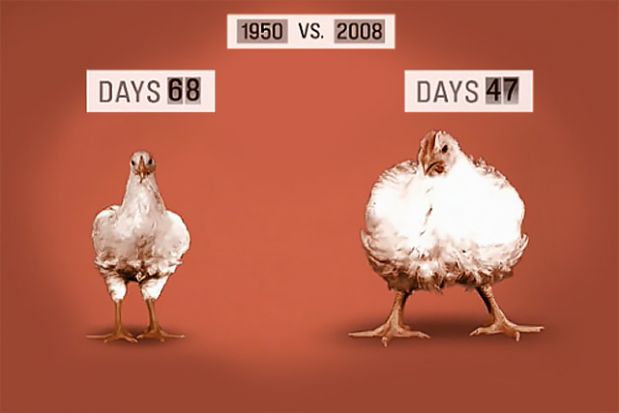What is Real? (Is it what you can taste and smell?)

Lets face it. We are living in a dream world. And the truly sad reality is that we don’t even know it. You probably never tasted real food. No two ways about it. If your first response is “No, It can’t be. I eat food every day”. It seems our problem then is that we don’t truly understand what we are tasting. I would say that its okay because most people don’t understand it either, but the reality is that it is this lack of understanding that is going to end up being the death of us all.
Humans have a very profound distinction in that we are the only living creature on Earth that willingly eats things that we know are bad for us. How many times do we talk about having cheats meals, and tell ourselves that ” I earned this”. Its not a cheat meal because we think it is good for us. We know it is bad, but the problem is that we still want it anyway. So lets dig into that a little more.
If we look at the things that we know are bad for us a few things tend to stand out. What do we like to eat as our cheat meals? Cookies, Ice Cream, Pizza, Chips, and so on and so forth. The initial thought is that we like these foods because they are sweet, salty or fats. And to some degree that is correct. There are plenty of studies that show that certain foods can activate or stimulate the pleasure centers of our brain. That’s part of the answer but that’s not quite it. things get a little deeper than that. If all I wanted was something sweet then why doesn’t drinking a glass of nothing but sugar water taste or even sound appealing. Even if you were to drink it most people would agree that it was “too sweet”. We would drink some and then not want any more. So maybe its not just the sugar that we are after.
There are quite a few studies that are starting to reveal that taste can actually change to reflect our nutrient needs. It has been observed in grazing animal by watching the types of grass that they eat. Animals that were made deficient in certain nutrients were found to change their diet and search out grass that had the missing nutrients. They do not consciously know what nutrients are missing but what has changed is that their ability to taste has changed. The grass that tasted good last week is no longer the same grass they want the net week. The literally hunger for a nutrient and they taste different grass until they find the one that satisfies that nutrient hunger.
Humans are theoretically capable of the same thing, when women become pregnant their taste changes. They like different foods and are craving certain foods. We do the same thing when we get dehydrated, we crave water. There are varying levels to our ability to acknowledge this. The main thing is that this is not necessarily pass down through genetics but through learned behavior. As we eat a larger variety of foods, our body begins to understand what foods fill gaps in its needs. This seemingly can happen without out conscious understanding. There is also a limiter. Even the good things we eat, there are times when enough is enough. When you are thirsty you don’t keep drinking until you make yourself sick. At some point your body lets you know that your are satisfied. Our bodies are very capable of knowing how to take care of itself even without us knowing.
But somewhere along the way we fucked it all up.
If our body can learn to crave the things that we need, then why is that we find ourselves craving things that are so bad for us?
The answer is simple, Gas Chromatology.
A few decades ago we came up with this process and the device that allowed us to identify certain molecules. In this case they were able to identify what molecules were in a substance, and from there they were able to determine that molecule A is responsible for this taste, and that Molecule B was responsible for this smell. Smell and taste would combine to create what we recognize as flavor. With the knowledge of what molecules create flavor, the unimaginable happened, we started making stuff taste like other things.
If we think back to the sugar water that was “too sweet” earlier, we can add the numerous flavor chemicals used to create “lemon” flavor and now not only will we drink all the sugar water but we might even ask for another. So what happened?
We like sweet stuff, but even then not too much sweet stuff. But if we add the right flavor and not only do we bypass our internal limiter on how much we want, but we might even or drink things we would have never started in the first place.
“Maybe they got it wrong. Maybe what I think Tasty Wheat tasted like actually tasted like
oatmeal, or tuna fish. That makes you wonder about a lot of things. You take chicken, for example: maybe they couldn’t figure out what to make chicken taste like, which is why chicken tastes like everything.”
There is an entire billion dollar industry based on flavor. Since the first flavor molecule was identified there have been several thousand individual taste and smells identified that can be combined in infinite combination to create the flavors that we have grown fond of. Everything from chips to drinks to even some of the meat and vegetables that we eat. To varying degrees, almost any food that you buy at the grocery store has had something done to enhance to alter the flavor.
But Why? Simple Answer: because flavor will sell product. If you eat more of it, you will buy more of it. Sadly, this not the end of the line.
Meat and Poultry is a very interesting business. The amount of beef, chicken, pork and other meats consumed on a daily basis is astounding. The idea of how to increase profit margins when it comes to livestock comes down to this. The longer it takes an animal to get to market weight/size is longer that it has to be taken care of: food, water, shelter etc… So how can I get animals to get bigger faster. Its simple you have to get them to eat more. How do they do it? Early experiments in just trying to cram more food down a chickens beak were… let’s just say, less than successful. So, the trick was flavoring. If they flavored the food animals would eat more.

Just like you and I have probably experienced, you can’t eat just one chip. Regardless of how hard you try, everyone always goes back for another, and another, and maybe another. And guess what? you probably weren’t even that hungry to begin with. if it can happen to you and that damn bowl of chips, you can rest assured those animals fall victim to the same thing. It tastes so good they just want to eat more. 
This isn’t a cry for animal cruelty, but it is a very different take on how we look on nutrition. The same concept that allows us to increase the rate that chickens gain weight, is very much the same concept that causes humans to gain weight. The flavors in our food cause us to eat more than we should.
So how do I know? The flavor “recipes” of most foods are closely guarded secrets. Very closely guarded. But there are some fairly recognizable ingredients.
| Acetic acid | Gives vinegar its sour taste and distinctive smell |
| Ascorbic acid | Found in oranges and green peppers and gives a crisp, slightly sour taste, better known as vitamin C |
| Citric acid | Found in citrus fruits and gives them their sour taste |
| Fumaric acid | Not found in fruits, used as a substitute for citric and tartaric acid |
| Lactic acid | Found in various milk or fermented products and give them a rich tartness |
| Malic acid | Found in apples and gives them their sour/tart taste |
| Phosphoric acid | Used in some cola drinks to give an acid taste |
| Tartaric acid | Found in grapes and wines and gives them a tart taste |
The other thing to keep in mind is sweeteners. Even artificial sweeteners. Drinking a diet soda because it doesn’t have sugar may not be as helpful as you thought. We convince ourselves that we are eating healthier because it doesn’t have sugar, but the reality is that its not the sugar that is the biggest fault, its that you are still drinking a soda.
You can drive your car to work or you can carpool, but regardless you are still going to work. Just the same, doesn’t matter what gets you to drink the soda as long as you keep buying.
So now what?
In my nutrition classes, I usually tell people that if you find yourself craving cookies and not something healthy like a salad, apple or even mixed nuts then it is just that, only a craving. the reality is that you can’t really escape flavoring in food. And to be honest its not all bad. We do it all the time anyways. Thyme, Basil, paprika, pepper, salt. The key is understanding that there is good food, and then there is food made to taste good, and when it comes down to it, be aware of what’s in the food you eat and just make a better choice.

For further reading
The Dorito Effect: The Surprising New Truth About Food and Flavor
Steak: One Mans Search For The Tastiest Piece of Beef
Both by Mark Schatzker
















